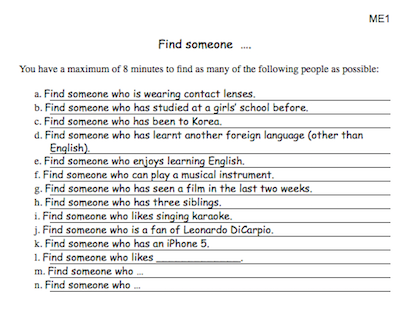Introduction to Second Language Teaching Methodology
Objective: To provide an overview of various second language teaching approaches and the one adopted in the official curriculum in Hong Kong.
Watch the following pre-class video, and then do the quiz. Please note the deadline for completing the pre-class Quiz.
Tapping Your Beliefs about L2 Learning
Everyone has beliefs about language learning. For example, some people believe that the best way to master the grammar of a language is to work through grammar exercise after grammar exercise.
What are some of your beliefs about L2 learning? Do you and other people share the same beliefs?
Take part in a real-time survey on beliefs about L2 learning. Go to the following website, click on ‘Student Login”, and enter the Room Number 705594. Then wait for the tutor to start the survey.
Reflecting on Your Experience in Learning English
Step 1:
Read the following excerpt (Section 1.8) from Lee and Sze (2015). In this excerpt, Paul Sze reflects on one scenario in his learning of English in primary school.
Step 2:
Get into groups of four. Share your experience in learning English. For example, did you enjoy learning English while you were in primary and/or secondary school? How did your teachers teach English? How did you learn English?
Thinking about the Goal of L2 Learning
What do people want to achieve when they embark on learning a second language?
Go to the following link, and complete the sentence:
“A successful ESL learner is someone who ……”
Trying out a Language Learning Activity
In the past, people thought that as long as you knew a lot of explicit grammar rules and had devoured pages of bilingual word lists, one day, you would be able to ‘use’ the target language. Today, we know that that doesn’t always happen.
Let’s take the case of Japanese as a foreign language. Listen to the following recording of Japanese. Then, ask yourself, if you simply knew a lot of Japanese grammar rules, and thousands of Japanese equivalents of Chinese words, would you be able to make sense of this recording?
Understanding the Features of a Methodology
In second language teaching, several approaches have been proposed. Each approach has its own distinctive features. For example, a lesson that follows the grammar-translation method will see a lot of explicit grammar explanation, which is likely to be done in the first language.
Step 1:
View excerpts from a lesson that follows the Audio Lingual Method (ALM). Pay attention to the characteristics of this method. The tutor will play the video from the teacher’s console.
Step 2:
Join another student, and work through the following quiz together. This quiz asks you to identify the features of ALM.
Getting a Taste of Today’s Language Learning Activity
Step 1:
Try out the following activity, which is called Find Someone. This is a well-known language learning activity today.
Step 2:
How does Find Someone differ from a traditional oral activity like one of the drills you saw in the ALM lesson?
Join another student and share your thoughts. Put down 4 points in a WORD document. Save it using both your names as the filename (e.g., John&Mary). Then put the completed file inside the folder designated by the tutor.
Trying Out the Dream Team
Do this in a group of three. Your goal is to produce a short PPT that introduces the people in your group to the whole class, and what you have in common.
Step 1:
Get into a group of three. Briefly introduce yourselves to each other.
Step 2:
Continue to chat with each other, until you can find 3 things that you have in common. Make a mental note of these common things.
Step 3:
Go to a computer, and start producing a PPT consisting of 5 slides:
- Slide 1: a selfie picture with all of you in it; the headline The Dream Team; the first names of the people in your group
- Slide 2-4: on each slide, a sentence that tells one thing you have in common, accompanied by an image (e.g., cartoon, photo, from Google)
- Slide 5: one sentence that begins with “We look forward to ……. in 2015/16”
Step 4:
Save your PPT using the names of the people in your group (e.g., John&Mary&Peter). Put this file in the folder designated by the tutor.
A Summary of the Approaches and Methods in Second Language Teaching
The following extract is taken from David Nunan’s 1989 book (Designing Tasks for the Communicative Classroom). Though a bit outdated, it sums up the major approaches and methods in L2 teaching, in the form of a table, that appeared up to the late eighties.
Stephen Krashen on the Importance of Comprehensible Input for language acquisition
Krashen made a significant impact on the theory of second language teaching in the eighties with his Comprehensible Input Hypothesis. In this video extract (3:11), he emphasizes the single most important factor for helping people to acquire a language: providing them with comprehensible input. He demonstrates that with a mini lesson in German. You will find that, because he has made his language comprehensible, you will be able to follow his German lesson. This also indirectly explains why we advocate teaching English through English today.


